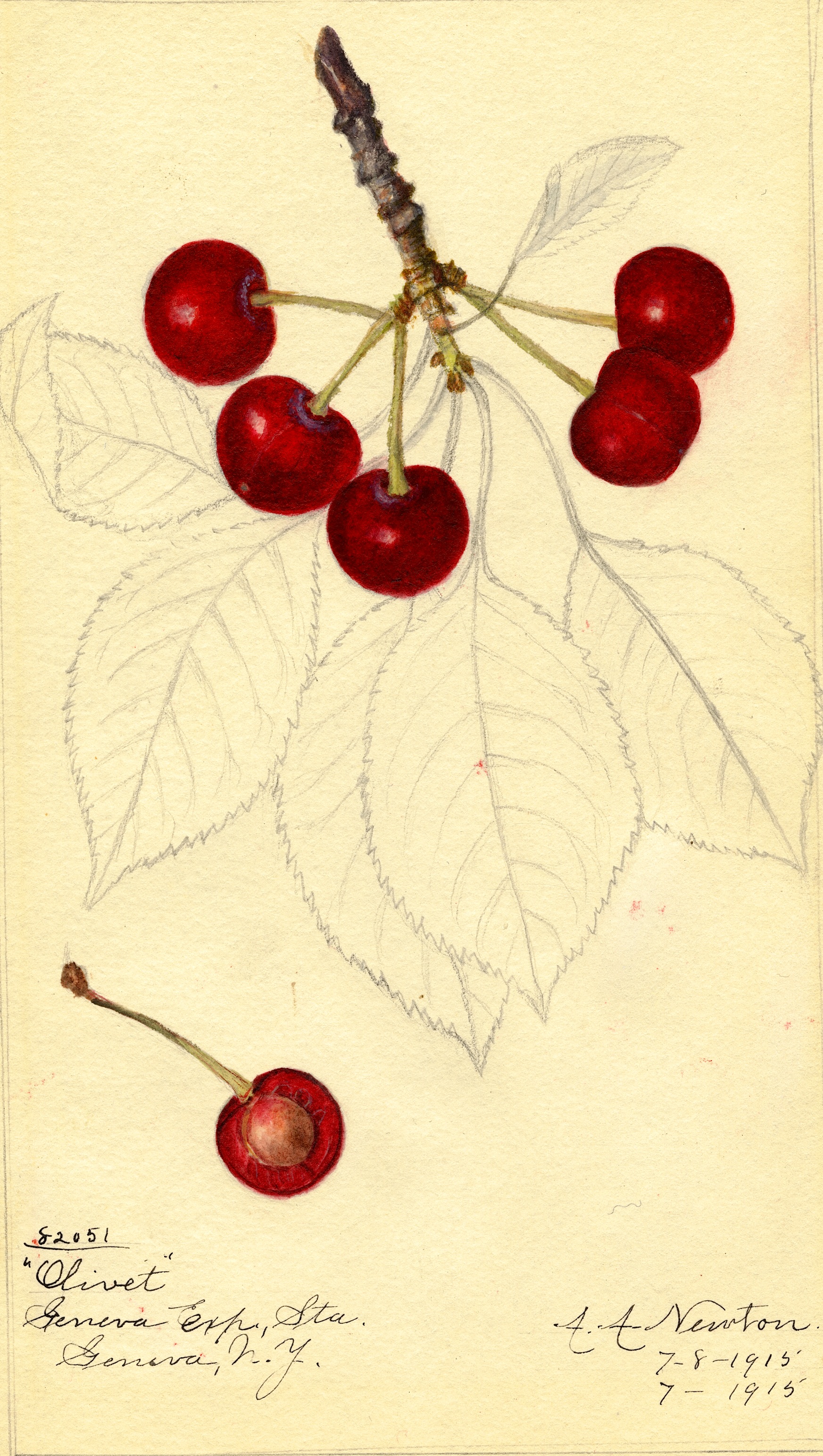 OLIVET
OLIVET
One of the larger of the Duke cherries, this globular, shiny fruit had a deep crimson skin and red flesh. As with all Duke cherries, the taste mingled sugar with acid. One taster at the dawn of the twentieth century praised the “rose-colored juice, tender, rich, and vinous, with a sweet subacidulous flavor” [The Cherry in Kansas, 60]. Bred in Olivet, Loire, France, it became an orchard favorite in the Montmorency district. The Olivet ripened throughout the month of June, and won a place at the market because in terms of size it was the largest of the Duke category of sweet-sour cherries. Yet it was somewhat more sour than most Duke cherries, causing some to wonder whether it result from a cross between a sour Morello and a Duke. It came into the United States in the 1875 and was entered on the registry of the American Pomological Society in 1881. It developed problems with insect infestation in the early twentieth century, falling victim to thrips. By the 1930s its brief vogue among American growers ended. Extinct?
"A Duke variety of French origin. Unlike most others of this class it is very early, and ripens over a long period. Fruit very large, globular and of a deep shining red; tender, rich and vinous" (Atlanta Nurseries Catalogue 1891, 7).
Nurseries that carried the Olivet Cherry in the South prior to 1920:
Alabama Nursery, Huntsville, AL 1900. Atlanta Nurseries, Atlanta, GA 1891-95. Clingman Nursery, Kiethville, LA 1908. Colmant Nursery, West End, AL 1904. Eastern Shore Nursery, Denton, MD 1900, Excelsior Nursery, Rome, GA 1890. Fruitlands, Augusta, GA 1885-99. Huntsville Nursery, Huntsville, AL 1897. Kentucky Nursery, Louisville, KY 1897. Munson Hill Nursery, Falls Church, VA 1897. Old Dominion Nursery, Richmond, VA 1894-1907. Richmond Commercial Nursery, Richmond, VA 1897. Van Lindley Nurseries, Pomona, NC 1899-1909.
Image: U.S. Department of Agriculture Pomological Watercolor Collection. Rare and Special Collections, National Agricultural Library, Beltsville, MD 20705, Amanda Newton 1915.
David S. Shields